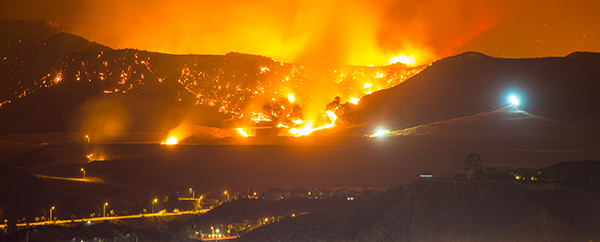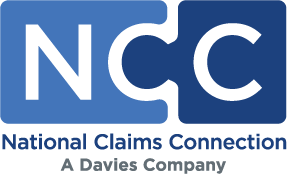
Winter storms. Blazing wildfires. Flooding. Tornado destruction. If there’s one thing we’ve learned, weather disasters can happen anywhere. CoreLogic says about 1 in 10 homes were impacted by natural disasters last year, totaling nearly $57 billion in property damage.
Your commercial clients can’t just hope that emergency events won’t happen in your area. They need to have a disaster emergency plan in place.
Let’s take a deeper look at your insurance clients’ potential hazards, and then learn how to conduct a vulnerability analysis to help them determine how well they can handle emergencies. We suggest you share this article with your commercial clients, which will guide them through creating their disaster emergency plan. EHS Daily Advisor recommends starting by gathering this information:
- Review internal plans and policies (e.g., evacuation plan, fire protection plan, security procedures, etc.)
- Meet with outside groups (e.g., government agencies, community organizations, utilities)
- Identify applicable federal, state, and local regulations (e.g., occupational safety and health regulations, environmental regulations, fire codes, etc.)
- Identify critical products, services, and operations (e.g., company products and services, products and services provided by suppliers, lifeline services such as electrical power, water, sewer, and gas, and operations, equipment, and personnel vital to keeping the business going)
- Gather internal resources and capabilities (e.g., resources and capabilities that may be needed in an emergency including personnel, equipment, facilities, backup systems)
- Identify external resources (e.g., local emergency management office, fire department, hospitals, police, etc.)
- Review insurance coverage with their agent (you)
In the next step of creating their disaster emergency plan, they should assess the vulnerability of their business. This should help them determine the probability and potential impact of each emergency. FEMA has created an Emergency Management Guide for Business and Industry which includes a chart (found in the FEMA guide) to assign probabilities, estimate impact and assess resources using a numerical system. The lower the score, the better.
Related: Start the New Year with an updated natural disaster emergency response plan
List potential emergencies in your disaster emergency plan
Using that chart, in the first column, list all emergencies that could affect your facility, including those identified by your local emergency management office. Include both emergencies that could occur in your facility and those that could affect your entire community.
What types of emergencies have historically occurred in your area (e.g., fires, severe weather, hazardous material spills, natural disasters – even terrorism)? Consider what could happen because of loss of electric power, downed communication lines, ruptured gas mains, smoke or water damage, structural damage, air or water contamination, explosion, building collapse, trapped persons, chemical release or prohibited access to the facility.
Factor in your location and geography, including proximity to: flood plains, seismic faults, and dams; companies that produce, store, use, or transport hazardous materials; major transportation routes and airports; and nuclear power plants.
Human error is the largest cause of workplace emergencies, resulting from carelessness, poor training, poor maintenance, misconduct, substance abuse or plain ol’ fatigue.
Technology is another area to analyze. What might result from a process or system failure? Possible issues are fire, explosion or hazmat incident; safety system, computer system or telecommunications failure; power or heating/cooling system failure; and emergency notification system failure, says EHS.
Consider your facility’s design and construction to determine which types of emergencies could result. EHS Daily Advisor recommends a review of the facility’s physical construction, hazardous processes or byproducts, facilities for storing combustibles, layout of equipment, lighting, evacuation routes and exits, along with proximity to shelter areas.
Now add them to the chart
Here’s a screenshot of FEMA’s chart headers.

To create your disaster emergency plan, add your list of potential emergencies, than rate the likelihood of each one’s occurrence, as best you can. Continue to add ratings across the columns, with a 5 being a high likelihood or impact, and 1 being low likelihood/low impact.
When you total the scores, you’ll see the areas that need attention with planning and resources.
Next, develop your disaster emergency plan
Your clients will want to focus those emergencies that scored high on their chart. In an actual disaster, their goals will be to
- Assess the aftermath situation.
- Protect employees, customers, visitors, equipment, vital records and other assets right away.
- Get the business back up and running.
Using FEMA’s plan outline, they’ll determine how to
- Warn employees and customers
- Communicate with personnel and community responders
- Conduct an evacuation and accounting for all persons in the facility
- Manage response activities
- Activate and operating an emergency operations center
- Fight fires
- Shut down operations
- Protect vital records
- Restore operations
The plan should include these documents:
- Emergency call lists — lists (wallet size if possible) of all persons on and off site who would be involved in responding to an emergency, their responsibilities and their 24- hour telephone numbers
- Building and site maps that indicate:
- Utility shutoffs
- Water hydrants
- Water main valves
- Water lines
- Gas main valves
- Gas lines
- Electrical cutoffs
- Electrical substations
- Storm drains
- Sewer lines
- Location of each building (include name of building, street name and number)
- Floor plans
- Alarm and enunciators
- Fire extinguishers
- Fire suppression systems
- Exits
- Stairways
- Designated escape routes
- Restricted areas
- Hazardous materials (including cleaning supplies and chemicals)
- High-value items
- Resource lists — lists of major resources (equipment, supplies, services) that could be needed in an emergency; mutual aid agreements with other companies and government agencies
Once you’ve written your disaster emergency plan and reviewed it with key staff and employees, it’s time to distribute the plan and train all employees. You’ll also need to coordinate with state and local responders.
View more details on life safety, communications, property protection community outreach, recovery and restoration and more in FEMA’s Emergency Management Guide for Business and Industry.
This article originally posted on Arrowhead General Insurance Agency, Inc.’s blog. It is reposted here with permission.

